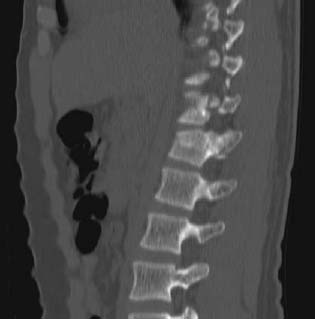

Clinical Images - a Quarterly Column: Chance Fracture of the Lumbar Spine. The Conservative Treatment of Traumatic Thoracolumbar Vertebral Fractures. 7.Spiegl U, Fischer K, Schmidt J et al.Traumatic Thoracolumbar Spine Injuries: What the Spine Surgeon Wants to Know. Khurana B, Sheehan S, Sodickson A, Bono C, Harris M. AOSpine-Spine Trauma Classification System: The Value of Modifiers: A Narrative Review With Commentary on Evolving Descriptive Principles. Fracture and Dislocation Classification Compendium-2018. Meinberg E, Agel J, Roberts C, Karam M, Kellam J. Concomitant and Previous Osteoporotic Vertebral Fractures. Spinal Instability Neoplastic Score (SINS): Reliability Among Spine Fellows and Resident Physicians in Orthopedic Surgery and Neurosurgery. Diagnosis and Management of Vertebral Compression Fractures.

thoracolumbar spinal fracture classification systems.Pathological vertebral fractures are treated with surgery, radiation therapy or kyphoplasty and/or vertebroplasty depending on the patient's condition and underlying disease 11. Osteoporotic vertebral compression fractures can be treated surgically or with vertebral augmentation including kyphoplasty and vertebroplasty 3. Uncomplicated compression fractures with the involvement of a single endplate and without relevant kyphotic (>15-20°) or scoliotic deformity (>10°) can be managed conservatively 7. It will be surgical most of the time if there are structural displacements or relevant deformity, associated posterior ligamentous or discoligamentous injuries, or concomitant neurological symptoms 7. Treatment and prognosis of traumatic lumbar fractures depend on the grade and morphology of the injury, the integrity of the posterior ligaments and the vertebral disc 4-7, and the presence of neurological symptoms. can be associated with osteoporotic compression fractures and in such a case are usually located one level above 12.if isolated they are considered stable 4-7.can be associated with translation-rotation or displacement injuries.can be associated with sacral fractures especially when multiple.can be combined with other vertebral fracture types such as tension band injuries or vertebral body, or process fractures.the result from torsional and shear forces.horizontal displacement or rotation of the vertebral bodies to each other.translation-rotation and/or displacement injuries.extension injury with disruption of the anterior tension band and intact posterior elements.associated with intra-abdominal injuries.typically a result of forced flexion anterior to the abdomen e.g.flexion-distraction injury with compression of the vertebral body and disruption of the posterior tension band with or without bony involvement of the posterior arch.the majority occur at the thoracolumbar junction T11-L2 8.monosegmental flexion-distraction injury with compression of the vertebral body and horizontal fracture of the posterior arch and spinous process 6.either incomplete or complete, depending on whether only one or both endplates are involved.the posterior vertebral wall is involved.result of high energy axial loadings such as a fall from height or motor vehicle accident.comminuted compression fracture through the vertebral body.most common type in osteoporotic and pathological fractures.can occur as a coronal split fracture (without the involvement of the posterior wall).Pathological fractures in this region are also more susceptible to instability 2. The thoracolumbar junction is the most common location of traumatic fractures due to the transition point of increased mobility. The lumbar spine is more mobile than the thoracic spine. The diagnosis is established by fracture typical imaging features of the lumbar spinal vertebrae. In a non-traumatic setting, there are often concomitant fractures 3 and they are often associated with: In traumatic injuries lumbar spine fractures can be associated with: The risk of osteoporotic fractures increases with age and they are more common in females 1. Traumatic fractures are more common in males.


 0 kommentar(er)
0 kommentar(er)
